New to RFID world.
I am working on a Healthcare product. One of the feature includes authentication of patients which will be done through RFID reader MFRC522. Application schematic in the datasheet explains about the matching and tuning circuits. But I couldn't find anything related to interfacing an external 13.56MHz antenna.

Can I use an external antenna 1462360001 from Molex in place of Lant (Antenna in datasheet pg.81)?
Datasheet of External antenna - https://www.molex.com/pdm_docs/sd/1462360001_sd.pdf
Edited:
I do not have much filter experience. Those application notes are really helpful. I am using AN1491 to design EMC filter & matching circuit for the chosen external antenna 1462360001.
Antenna datasheet doesn't specify all the parameters needed in the calculation tool to design like Ca & Ra values are not mentioned.
Here is the snapshot of the calculation.

La = 2.11uH (from antenna datasheet), Ca = Ra = 0 (missing in datasheet) Which gives L0, C0, C1 & C2 values.
Please let me know if I am doing anything wrong.

